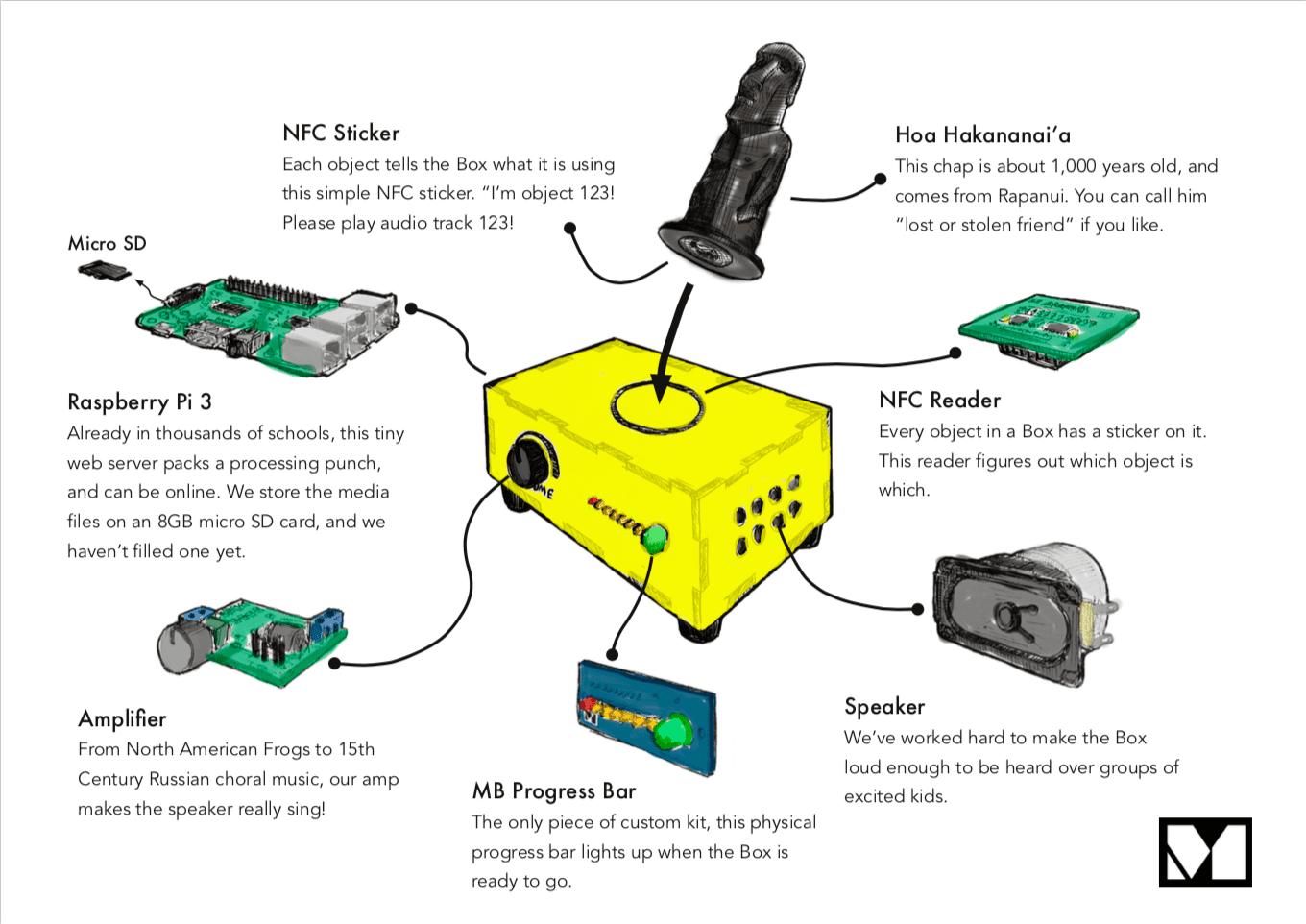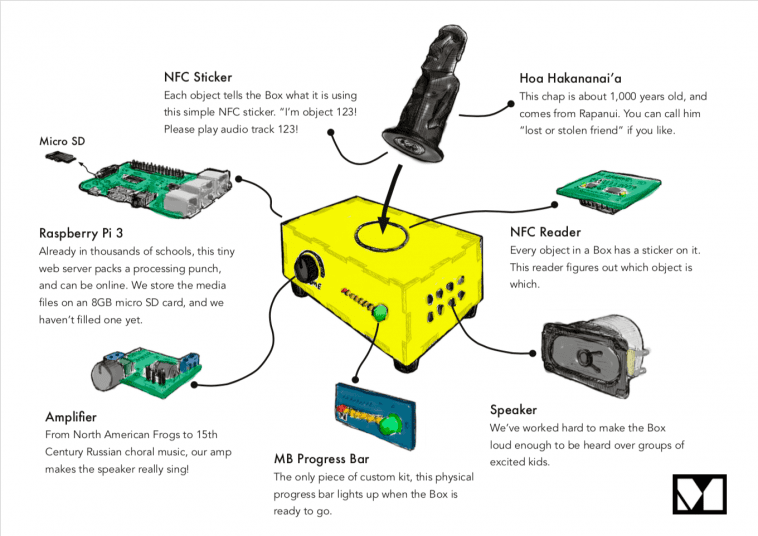Bringing a new dimension to history and museum education, the Museum in a Box is a brilliant interactive learning experience. It uses 3D printed objects with NFC chips to trigger audio commentary, all managed by a Raspberry Pi.
A field-trip to a museum is an integral part of every schoolkid’s education. It’s a rite of passage to bundle onto a coach, squabble all the way there and back, pay hardly any attention to the exhibits on display, and push your poor overworked teacher to the end of their tether.
Also, to spend all of your lunch money on useless trinkets from the gift shop.
But what if teachers were able to bring a whole museum into your classroom, instead? That would be quite fun, wouldn’t it? That’s the concept behind Museum in a Box.
Powered by a Raspberry Pi and nestled inside a laser-cut plastic enclosure, this is a device that takes a radical new approach to conservation education using 3D printed objects enhanced with NFC (Near Field Communication) technology.
How does it work? Simply pick up an artifact and plonk it on top of a Museum in a Box. The NFC tag on the underside of the object will be detected by the Raspberry Pi inside. This in turn triggers an audio commentary through a built-in speaker, explaining the history behind the object.
And the items themselves are genuine historical artifacts. Thanks to the ‘Scan the World’ project, an ambitious initiative to archive objects of cultural significance using 3D scanning technologies, the Museum in a Box team has 3D printed miniature replicas of some of the world’s most recognizable statues and sculptures.

Museum in a Box Addresses Real Challenges for Education
Two of the biggest challenges facing museums in the 21st century are distance and space.
For one thing, unless you live near a major city where museums are in abundance, you’re unlikely to see something like the Rosetta Stone in person. Instead, you have to make do with online photos or videos of these world-famous artifacts.
For another, there’s the matter of storage. It’s estimated that only around 5 to 10% of museums’ overall collections are actually on show across the globe. The rest is boxed up and stored in warehouses, inaccessible to the public because of the risk of damage or simply due to lack of space.
Museum in a Box is a fantastic solution, using modern maker tools like 3D printing and Raspberry Pi to bring museum collections and expert knowledge directly to the classroom.
Moreover, using the same technology, students are encouraged to create their own box-sized museums. It can contain stories and research about their local area. In this way, Museum in a Box enables students to explore and classify their own local history.
With interest in the project continuing to grow, the team behind Museum in a Box will soon be delivering ten boxes to the Smithsonian Libraries in the US for their Unstacked initiative.
They’re also making a box for the British Museum to support their Iraq Scheme initiative, and another box will be heading to the V&A to support their See Red programme.
Last but not least, the Museum in a Box team will be showcasing at Raspberry Fields. This is a new maker festival taking place on 30 June and 1 July 2018 in Cambridge, UK. Find out how to get your ticket here.
Website: LINK


